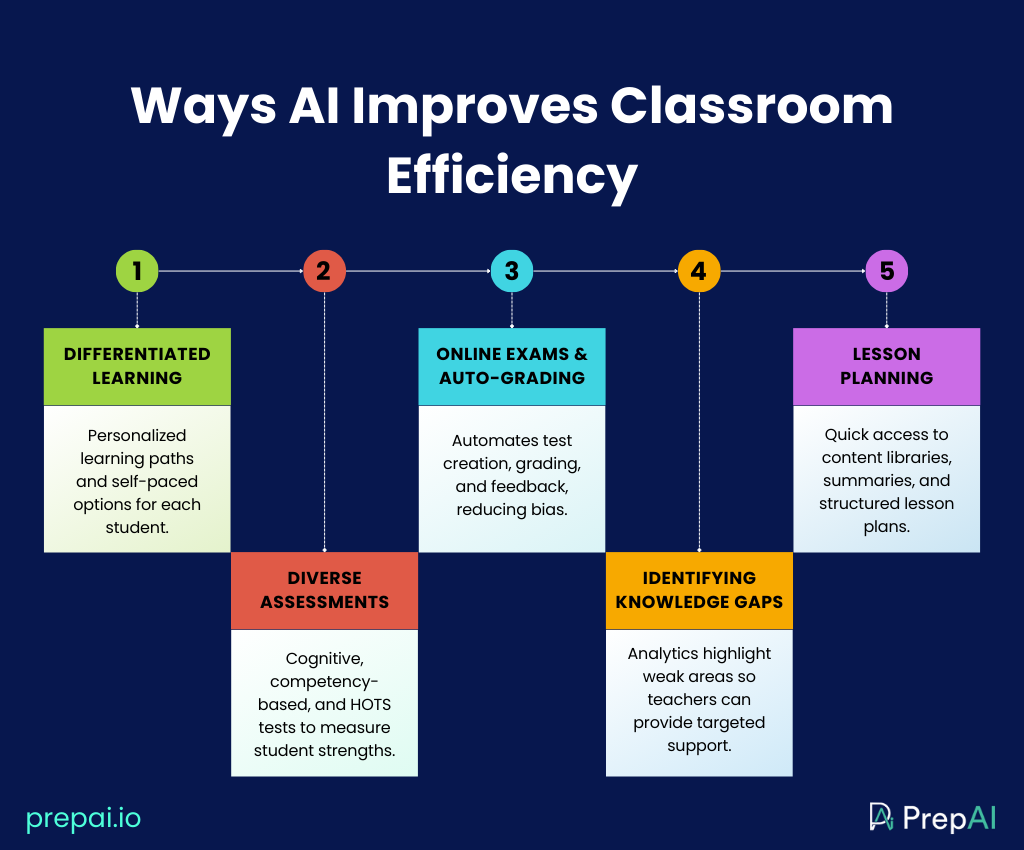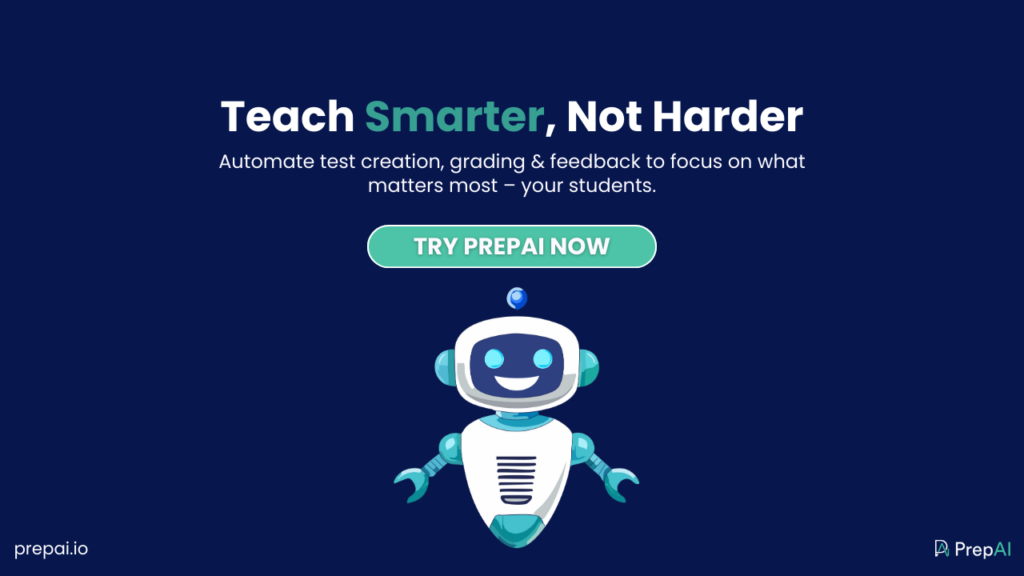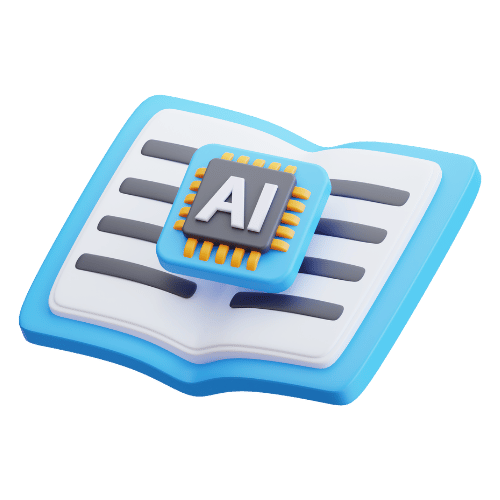AI EdTech tools can increase efficiency, reduce workload, and save time for educators by streamlining several activities. Here, we’ll discuss how to increase classroom efficiency with AI and the results of the Gallup study about AI saving time for teachers.
Artificial intelligence is rapidly becoming an integral part of the global education industry. Many countries in Africa, such as Nigeria, Kenya, and South Africa, are investing in AI across different sectors. Statistics show that more than 200,000 African students enrolled in AI-related courses in 2024, indicating the growing interest in the technology on the continent.
In Kenya, Eneza Education is an AI-powered literacy app intent on transforming early education. It is a mobile-based solution that creates customized exercises for users based on their reading levels. This empowers students from rural regions to improve their learning at their own pace, even without constant supervision. Similarly, in South Africa, Thinkster is an AI platform that offers personalized activities to develop cognitive skills in students (critical thinking, problem solving, etc.).
While there are still many concerns about the lack of proper AI models trained on African data and languages to preserve cultural integrity, artificial intelligence is making waves across the land. That’s because educational institutions can still increase classroom efficiency with AI and support teachers to use automated tools to streamline their activities. By incorporating AI in daily teaching routines, many teachers have saved time, energy, and resources over time. This has been reported by the Gallup study, too.
In this blog, we’ll read more about the study report and what it means when a teacher can save six weeks per year by actively using AI tools.
Gallup and the Walton Family Foundation’s Survey Report
Gallup and the Walton Family Foundation conducted a study between 18th March and 11th April 2025 via the web. With 2,232 sample sizes consisting of K-12 teachers from the US, the survey report revealed many interesting insights about the role of AI in modern education. The focus has been on using EdTech for teacher productivity in different ways. After all, teachers are often overworked and stressed, resulting in burnout, decreased efficiency, and other concerns in the long run. This issue can be addressed using AI tools like the PrepAI exam generator.
According to the report, teachers used AI for nine major activities, such as creating worksheets and assignments, generating skill-based assessments, completing administrative work, automating grading and sharing feedback, personalizing study material for different students, analysing patterns in student data, and offering one-to-one tutoring. Teachers reported saving time between 60% and 84% for these activities.

Additionally, teachers who regularly used AI tools and invested their time in the process received what the report called ‘dividends’. AI dividends are gains teachers reaped by embracing advanced technologies. For example, the study showed that using AI tools weekly resulted in saving an average of 5.9 hours per week. When the numbers were added up, teachers could save about six weeks’ worth in a single educational year (37.4 weeks). That’s around a month and a half of time saved just by efficiently using AI.
This estimate was calculated on a task-by-task basis where the teachers used AI for at least one of their activities. The study added up the durations for non-overlapping activities to arrive at the final number. Is there any wonder that artificial intelligence is being dubbed as one of the best educational time management tools in the global market?
Ways to Increase Classroom Efficiency with AI
AI and classroom management are complementary terms in today’s education sector. Artificial intelligence can be used in diverse ways to help teachers manage classrooms effectively, to increase student engagement, and to improve the overall quality of learning.
Here are a few ways to increase efficiency in classrooms by using AI tools.
Differentiated Learning
One-size-fits-all is no longer a viable option in modern education. That’s because globalization and immigration have made classrooms highly diverse. Moreover, it is necessary to promote inclusive classrooms where students from different backgrounds can study together in a positive and nurturing atmosphere. AI helps with differentiated learning, where teachers can create personalized learning paths for each student based on their abilities and weaknesses. Such solutions also include self-paced learning options for students to slow down the lessons or accelerate them to align with their preferences.
Conduct Online Exams and Auto Grading
While offline exams have their advantages, there’s no denying the benefits of conducting exams online. Not only does it simplify the process, it also automates adjacent activities, such as generating test papers for competency based assessments, sharing links to students, automatically grading the submitted answers, and sharing feedback with students. Instead of spending days and weeks to manually read every answer sheet and grade it, teachers can use AI tools to automate the process. This also reduces the risk of bias and prejudices that can affect the grading process. Teachers find it easier to adhere to the grading standards.
Creating Lesson Plans
Schools can promote the use of AI to save teachers’ time spent on creating lesson plans, collecting study material, generating workbooks, etc. Generative AI like ChatGPT and other EdTech tools powered by artificial intelligence provide access to large content libraries, subject books, community notes, and much more for teachers to quickly create more lessons. Additionally, teachers can also brainstorm ideas, summarize extensive notes, and share the material with others. AI tools help structure lessons, categorize them into neat orders, and make every session more engaging and interesting for students.
Various Types of Assessments
Another way to increase classroom efficiency with AI is by creating diverse assessments to measure the strengths and abilities of the students. For example, with PrepAI, teachers can conduct cognitive ability test s and evaluate the higher-order thinking skills (HOTS) to encourage better decision-making, problem-solving, and critical thinking in students. In the same way, competency based learning assessment tests focus on highlighting the core competencies of students. Teachers can then use the insights to guide students to hone their skills.
Identifying Knowledge Gaps
Knowledge gap is a common concern in educational institutions. Isn’t that why students attend schools? However, when the conventional model is followed, it doesn’t provide space for teachers to customize learning experiences based on students’ strengths and weaknesses. However, by using AI solutions like diagnostic analytics and predictive analytics, teachers can identify the weak areas and provide necessary support for students to fill the knowledge gap. If a student finds it hard to understand calculus, the teacher can create exclusive content to help the student spend more time on the topic and understand it.

Final Words
Artificial intelligence has been transforming education to personalize learning, make classrooms inclusive, and automate non-teaching activities. In short, schools can enhance classroom efficiency with AI while also helping teachers save time without compromising quality. In fact, many teachers have reported better quality outcomes by using AI EdTech tools regularly.
Know teachers who would benefit from using AI quiz generators in classrooms? Partner with us to promote the adoption of advanced technology in educational institutions and empower teachers to make learning more interactive, fun, and appealing to students from diverse backgrounds.



